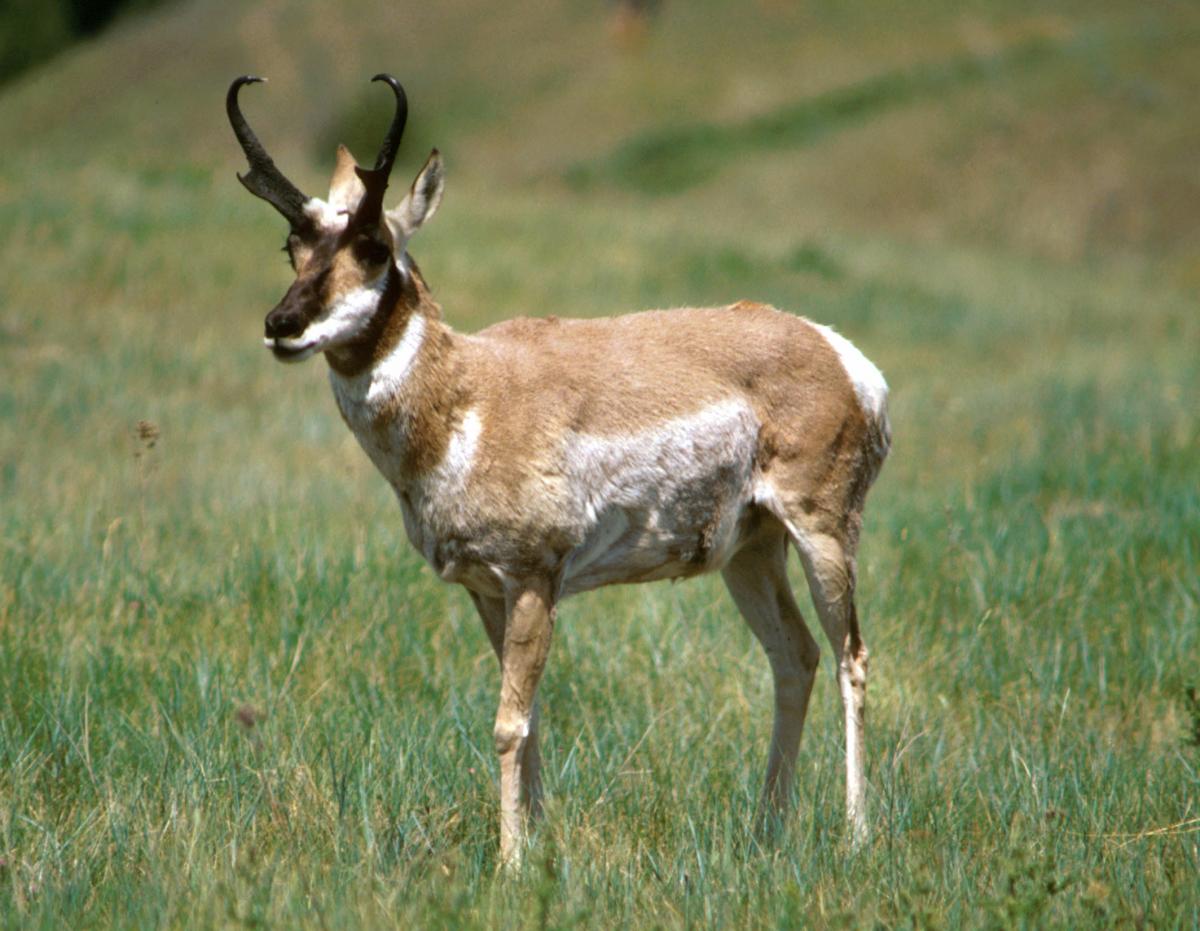The Sonoran pronghorn (Antilocapra americana sonoriensis) was one of the first species declared Endangered in the United States, receiving Federal protection under the new Endangered Species Preservation Act in 1967. These pronghorn are the fastest land mammal in North America, and are specially adapted to survive in the hot, dry conditions of their range in Arizona and Mexico.
 A severe drought in 2002 almost wiped out this species in the United States: about 20 animals survived the harsh conditions. A semi-captive breeding effort led by the Arizona Game and Fish Department played a major role in helping the original Arizona pronghorn population rebound to almost 200 animals. Climate change, habitat loss, and human activities including mining threaten the small, fragile populations in both Arizona and Mexico.
A severe drought in 2002 almost wiped out this species in the United States: about 20 animals survived the harsh conditions. A semi-captive breeding effort led by the Arizona Game and Fish Department played a major role in helping the original Arizona pronghorn population rebound to almost 200 animals. Climate change, habitat loss, and human activities including mining threaten the small, fragile populations in both Arizona and Mexico.
The US Fish and Wildlife Service (USFWS), in collaboration with other State and Federal authorities in the US and Mexico, are revising the Sonoran Pronghorn Recovery Plan, originally written in 1982 and revised in 1998. The USFWS invited CBSG and CBSG Mexico to conduct a population viability analysis (PVA) in April 2013 and to facilitate a Population and Habitat Viability Assessment (PHVA) in June as part of the recovery planning process. PHVA workshops are led by a skilled CBSG facilitator and incorporate the scientific rigor of a population viability analysis that helps wildlife biologists and managers more clearly understand the threats that influence populations.
At the Sonoran Pronghorn PHVA last month, participants focused on identifying recovery criteria, objectives, and actions for the updated plan. The workshop discussions incorporated information from a recent study about the Sonoran pronghorn's high sensitivity to the effects of climate change. The new AZA studbook coordinator for the North America pronghorn population attended the PHVA, offering valuable information on captive population management in North American zoos. This Recovery Plan revision will explicitly include the Mexico populations in long-term conservation planning, as well as the process of analysis and recommendation regarding the future of the semi-captive populations in Arizona.


